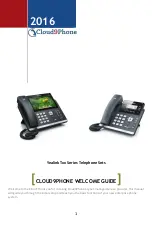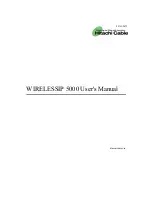
Guidelines for Safe and Efficient Use
General
Since its introduction in the mid 1980s the mobile phone is one of the
most exciting and innovative products ever developed. Your phone can
help you to stay in touch with your office, your home, emergency
services and others.
Your mobile phone is a radio transmitter and receiver. When the phone
is turned on it receives and transmits radio frequency (RF) energy.
Depending on the type of mobile phone you have purchased, it operates
in different frequency ranges and employs commonly used modulation
techniques. The system that handles your call when you are using your
phone, controls the power level at which your phone transmits.
Exposure to Radio Frequency Energy
The International Commission on Non-Ionizing Radiation Protection
(ICNIRP), sponsored by the World Health Organisation (WHO),
published a statement in 1996 which sets limits for exposure to RF fields
from handheld mobile phone. According to this statement, which is
based on the available body of research, there is no evidence that mobile
terminals meeting the recommended limits can cause any adverse health
effects. All Ericsson telephones conform to the ICNIRP
recommendations, and international exposure standards, such as:
●
CENELEC European Pre-standard ENV50166-2
●
ANSI/IEEE C95.1-1992 (USA, Asia-Pacific)
If you want to limit RF exposure even further, you may choose to
control the duration of your calls and operate your phone in the most
power efficient manner.
Efficient Phone Operation
How to use your phone for optimum performance with minimum power
consumption:
●
Hold the phone as you would any other telephone. While speaking
directly into the mouthpiece, angle the antenna in a direction up and
over your shoulder. If the antenna is extendable, it should be
extended during a call.
●
Do not hold the antenna when the phone is in use. Holding the
antenna affects call quality, may cause the phone to operate at a
higher power level than needed and shorten talk and standby times.
Antenna Care and Replacement
●
Do not bend the antenna since it is sensitive and since this will
reduce its performance.
●
Do not use the phone with a damaged antenna. Consult your manual
to see if you may change the antenna yourself. If so, use only an
Ericsson approved antenna. Otherwise, take your phone to a qualified
service center for repair. Use only the designated Ericsson antenna.
●
Do not use an antenna designed for any other type of portable
telephone than the telephone you have purchased. Unauthorized
antennas, modifications, or attachments could damage the phone and
may violate the appropriate regulations.
Driving
Check the laws and regulations on the use of telephones in the areas
where you drive.
If you are going to use your mobile phone while driving:
●
Give full attention to driving.
●
Use hands-free operation, if available.
●
Pull off the road and park before making or answering a call if
driving conditions so require.
RF energy may affect some electronic systems in motor vehicles. In
addition, some vehicle manufacturers forbid the use of mobile phones in
their vehicles. Check with your vehicle manufacture’s representative to
be sure your phone will not affect the electronic systems of your vehicle.
EN/LZT 126 1452 R2A
v
Содержание TH688
Страница 8: ... ...






































